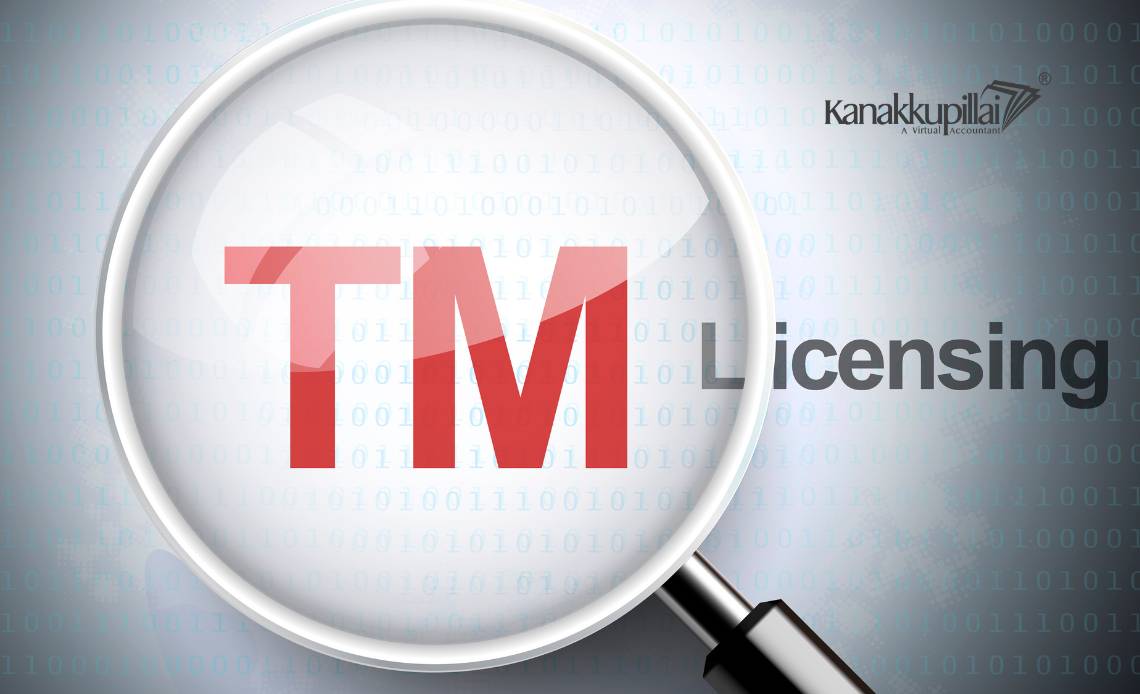Trademarks are a form of intellectual property and allow firms to create a brand, engender consumer loyalty, and gain visibility in the market. Some forms of trademark include the corporate logos, taglines, product names, and other forms of distinctive packaging or color combinations associated with a brand.
The protection of trademarks will confer exclusive rights, enabling the rightsholder to employ the trademark and prohibiting others from using it without permission from the owner. Most jurisdictions provide for the registration of trademark rights from governmental bodies, which, in India, includes the Intellectual Property Office. Registration renders legal protection for an owner against infringement, counterfeiting, or illegal use. Even the trademarkers who do not have registration enjoy some minor parts of protection under law according to common law if their brand name has become somewhat notorious over the years.
To maintain their rights, owners must use and renew their trademarks in a timely manner. In the event of any infringement, an action can be filed, prohibiting further unauthorized use with damages. Strong trademark protection not only protects the identity of a brand but more importantly, prevents consumers from being misled in the market.
What is Infringement of Trademark?
Trademark infringement occurs when a well known mark or a mark that so closely resembles it is used by one who is not authorised by the owner in a manner that is confusing to consumers. Such an infringement tarnishes goodwill, which translates into an economic loss to the owner, as consumers are misled into believing that they are purchasing the goods or services of the rightful trademark owner.
The salient elements that constitute trademark infringement are as follows:
- Illegitimate Use – The infringer must have made use of the trademark or similar mark without the consent or authority of the rightful owner.
- Resemblance to a Registered Trademark – The mark in question ought to be similar or closely related to the registered trademark.
- Confusion to the Public – The unauthorised use leads to confusion among the consumers with regard to the origin of the goods or service.
- Use in Commerce – In order to bring the trademark infringement action, the unauthorised mark must be put to commercial use such as being advertised or traded.
Generally, the remedies available for a trademark infringement may incorporate the issuance of injunctions, the payment of monetary damages, and forfeit of the counterfeit goods. Sometimes even the criminal penalties may follow.
Before selecting a brand name, a company should conduct a thorough search for trademark clearance and subsequently initiate steps for its protection through registration.
Types of Trademark Infringement
Trademark infringement relates to the unauthorised use of a trademark which is identical or deceptively similar to a registered trademark. Trademark infringement comes in two kinds: direct infringement and indirect infringement, each having its own legal consequences.
1. Direct Trademark Infringement
Direct infringement applies to the use by any person or by any firm of a registered trademark or of any confusingly similar mark without the consent of the registered proprietor. Direct infringement usually causes confusion in the minds of consumers as to the source of the goods or services.
Basic Elements of Direct Infringement (as defined in Sec 29 of The Trademark Act, 1999 in India):
- The infringement trademark is either identical to or closely resembles the registered trademark.
- The registered proprietor has not granted permission for use of the trademark.
- Unauthorised use concerns goods or services within the ambit of protection provided by the registered trademark.
- The use is likely to cause confusion to the public.
Examples: A local shoe manufacturer using “Adibas,” a name confusingly similar to “Adidas”; an unlicensed eatery applying the logo and name of McDonald’s appealingly; and a software house displaying a logo that resembles the bitten apple of Apple.
2. Indirect Trademark Infringement
Indirect infringement refers to the act of facilitating, encouraging or contributing to the infringement of a trademark without making a direct use of the mark. It can be subdivided mainly into two types:
a. Contributory Infringement of Trademark
A party being involved intentionally supports, induces or enables another infringer in infringing any trademark. For instance, such persons or companies may help infringers to sell or distribute fake products.
Example – Where a web page sells such bogus labeled watches knowing them to be counterfeit. A printer prints packaging featuring a misappropriated logo for counterfeit goods. The landlord purposely rented space to a counterfeiter selling counterfeit clothing.
b. Vicarious Trademark Infringement
Here, a party has control over the direct infringer and derives economic benefit from the infringement. This concept usually applies in business partnerships, employer-employee relationships, and large companies.
For example, a manager of a company allows counterfeit products to be marketed under a well-known brand name. Franchisee corporations may use trademarked names without obtaining licenses from the brand owner. A business partner earning from a fraudulent product with pre-existing brand identity.
3. Counterfeit Trademark Infringement
Counterfeiting takes place when a trademark is unauthorisedly affixed to bogus goods that are produced with the intent of deceiving the consumer into believing that he is actually getting bona fide branded goods. In various jurisdictions, this act has been regarded as a grave crime.
Such examples include selling fake Rolex watches, impersonating Nike with fake footwear with the original logo and packaging, and dispensing pharmaceutical drugs with the common name as the legitimate product.
4. Passing Off (for Unregistered Trademarks)
A brand owner may institute court proceedings on passing off even if their trademark is not formally registered. Such scenarios arise when a company deliberately misrepresents its goods or services as being connected to an established brand with the potential of confusing the consumer.
Incidents include a local fast-food chain using the colours, typeface, and slogans of a well-known brand and a small clothing shop naming its products after a famous designer label.
5. Trade Dress Infringement
Trade dress refers to the distinctive visual appearance and packaging of a product, and when a competitor copies the look, design, or packaging of a product in a misleading way intending to confuse consumers, he has engaged in trade dress infringement.
For example, a soft drink manufacturer can imitate the color and shape of a Coca-Cola bottle, or a perfume company could fashion a bottle modeled almost exactly after that of Chanel No. 5.
6. Domain Names Trademark Infringement
This occurs when a business registers a domain name closely resembling an established trademark intending to confuse consumers or induce profit. The trade of cybersquatting signifies such cases.
Examples: The creation of www.googgle.com to mislead individuals searching for Google. A third party registering www.applephones.com to sell unrelated products.
Remedies for Trademark Infringement
In the event of infringement of the registered trademarks, the owner may pursue multiple legal remedies to enforce rights, halt illegal use, and demand monetary compensation. The various available remedies for trademark infringement can be broadly classified under three heads, namely, the civil, the criminal and the administrative. Under all these approaches, trademark violations appear to result in monetary and reputational harm, as well as confusion to the consumers. However, in many cases, trademark owners may use a number of legal remedies, such as civil suits, criminal prosecutions, administrative actions, and alternative dispute resolution. Usually, effective monitoring and enforcement of the trademark and compliant registration serve best for the prevention and cure of most instances of trademark infringement.
1. Civil Remedies for Trademark Infringement
For civil remedies, one has to file a suit against the infringer in the right court that provides a legal shield and remedies for damages. The main civil remedies are:
a. Injunctions, Temporary or Permanent
An injunction is a legal order that prohibits a user by law from using the trademark any further. Injunctions are of two kinds: temporary and permanent. A temporary injunction is granted pending a decision of a dispute between the parties, while a permanent injunction is against infringement:
Example: The judge may give a temporary injunction against a company for the sale of counterfeit Nike sneakers until the matter is decided.
b. Damages and Compensation
An owner of a trademark has the right to sue for monetary provisions of damages suffered because of infringement. This includes:
- Actual damages, which comprise lost earnings resulting from the infringement.
- Punitive damages are additional penalties imposed for intentional violations.
- Litigation expenses, where infringers may also be liable for covering legal expenses.
Example: If a counterfeit seller makes ₹10 lakh out of a counterfeit brand, the court will order him along with other penalties to pay the same amount.
c. Delivery of Seizable Infringing Goods
The court has the competence to order all infringers to surrender all counterfeitments and also the apparatus used in their manufacture such as labels, packaging, or machinery. Such articles may be dismantled in this case before being eliminated from the market.
Example: A court might instruct a company making counterfeit Levi’s jeans to destroy all inventory and take down false products from retail locations.
d. Account of Profits
The trademark owner instead can hope for all profits that the infringer has gained as a result of the unauthorized use of the trademark and not direct damages. This will ensure that the infringer does not derive profit from his unlawful activity.
Example: In the case of an inappropriate name appearing in any advertising, the infringer has to return all the revenue generated by that misleading campaign.
2. Criminal Remedies for Trademark Infringement
Trademark infringement in some jurisdictions, including India, as per the provisions of the Trademarks Act, 1999, is considered a crime. The very existence of such criminal remedies acts as an effective deterrent to counterfeiting and brand abuse. These remedies include:
a. Imprisonment
Individuals convicted under Section 103 of the Trademarks Act, 1999 (India) for selling or manufacturing counterfeit goods with registered trademarks may be sentenced to imprisonment for a term extending to three years.
Example: An individual caught selling counterfeit branded pharmaceuticals could be imprisoned for endangering public health.
b. Fines and Penalties
Fines can reach ₹2 lakh, or beyond, depending on the gravity of the offense, imposed on the infringers. An aggravated form of this penalty may be applied to habitual infringers.
Example: A person caught selling counterfeit Adidas footwear may have to pay fines worth millions of dollars for misleading the consumer.
c. Seizure and Destruction of Counterfeit Goods
Counterfeit goods may be seized, confiscated, or destroyed at the discretion of law enforcement agencies. The court could also order:
- Application for the confiscation of all goods infringing registered trademarks, which are presently in the strong rooms, warehouses, manufacturing plants, and retail outlets.
- Closure of any and all businesses that indulge in trademark infringement.
Example: A police raid could lead to shutting down a factory that produces counterfeit luxury handbags using unauthorized trademarks.
3. Administrative Procedure Concerning Violation of Trademark Rights
Besides seeking recourse from the courts, trademark holders can pursue administrative remedies in the state intellectual property office. These administrative remedies consist of:
a. Opposition to Registration
The legitimate owner can oppose the registration of a new trademark that closely resembles an older trademark. This is a preventive way to stop imminent infringement.
Example: Apple Inc. could oppose the registration of “Applle Mobiles.”
b. Cancellation of Removal of Fraudulent Registrations
The legitimate owner may apply to the Trademark Registry to have the trademark canceled or removed in case of registration in bad faith by a competitor.
Example: The Trademark Office could cancel the registration of the fake electronics company “SamsungX.”
c. Domain Name Dispute Resolution
In the case of cybersquatting, when someone registers a domain name resembling an actual trademark, the trademark owner can file a complaint with the World Intellectual Property OrganiSation (WIPO) in accordance with Uniform Domain Name Dispute Resolution Policy (UDRP); basically, this is the zoomed out procedural way for a trademark owner to get their domain name back.
Example: Should anyone have registered www.nike-shoes-online.com without consent from Nike, the domain can legally be transferred to Nike.
4. Alternative Dispute Resolution (ADR) for Trademark Conflicts
Some trademark conflicts can be settled outside the legal process either by mediation, involving two parties in discussion towards resolution of the dispute, or Arbitration, where the neutral third party assesses the case and gives a binding verdict, or Conciliation, which helps the disputants to reach a consensus.
Example: Two companies would like to mediate rather than litigate towards creating different characters between their respective trademarks.
Conclusion
Trademark infringement has significant dangers to companies in terms of resulting financial losses and brand dilution, if it is applicable at all, as well as confusion from customers. All legal avenues are available for the protection of trademark holders’ rights vis-a-vis unauthorized usage, whether civil lawsuits, criminal sanctions, or administrative actions. Courts can either grant injunctive relief and damages or even confiscate fakes. Criminal punishment may include fines and imprisonment. Additionally, companies can go for trademark opposition and resolve domain name disputes to minimize misuse. Through continuous monitoring and enforcement of trademark rights, companies can be guaranteed brand image protection in the headline market to sustain consumer confidence and the protection of the law against detrimental infringement.
Related Services





